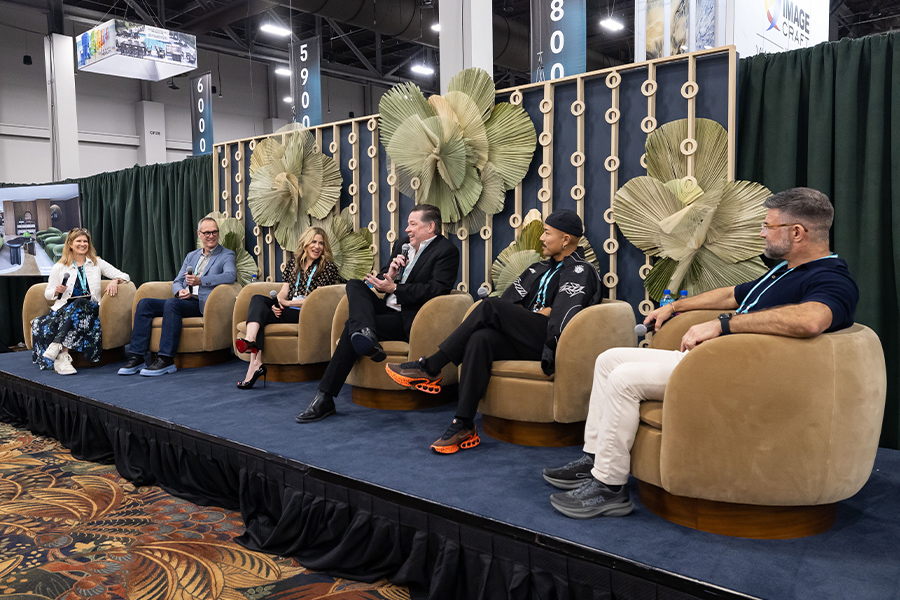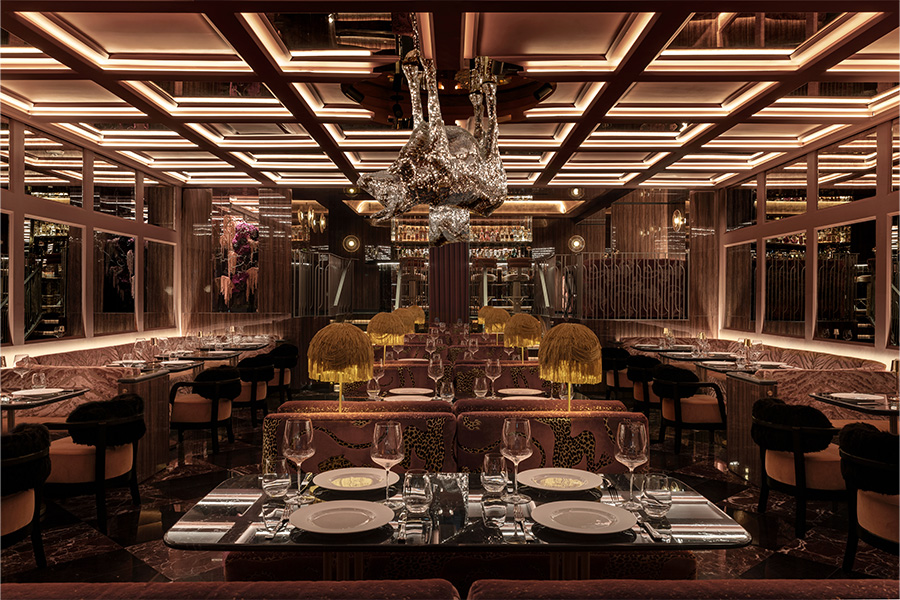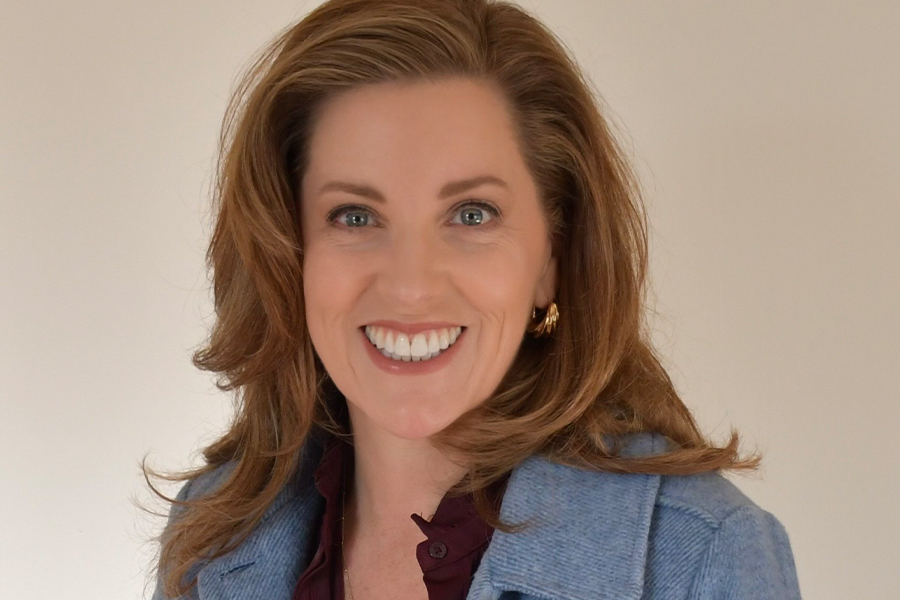In a dynamic panel discussion at HD Expo + Conference, five firm leaders and business owners—Christian Schnyder, Beleco; Tiffany Miller-Baker, Eleventh Floor Design; Matt Mars, FlickMars; Kevin Chan, Nivek Remas; and Matt Berman, Workshop/APD—gathered to explore the evolving meaning of office culture.
From fostering team connection and navigating hybrid schedules to mentoring the next generation and making difficult leadership decisions, here are six takeaways on how design firms are rethinking culture, talent, and growth.
1. Flexibility matters
The rise of remote and hybrid work has made office culture a moving target, but a common thread among the panelists was the importance of flexibility and intentional connection. Several firms, for example, work on a hybrid schedule. For Matt Mars, partner at Dallas-based FlickMars, the in-office days are critical for mentorship and collaboration, while remote days allow for heads-down productivity. “The biggest challenge we found is how to continue learning [in both environments].” Yet, the flexibility in the workplace—especially for parents—“is a nice evolution that we’ve embraced,” he said.
Meanwhile, New York firm Eleventh Floor Design is fully remote—a decision principal Tiffany Miller-Baker made after launching her firm just before the pandemic in 2019. Despite not sharing a physical office, the six-person team stays closely connected and meets in person at industry events like HD Expo + Conference. “We communicate a lot throughout the day,” she said.
Regardless of setup, Christian Schnyder, owner of Los Angeles-based Beleco, emphasized maintaining cohesion across teams—remote or not. “I’m more interested that they are part of the firm and not just the project [they’re working on],” he noted, citing the importance of all-hands meetings and shared meals when the team gathers. “I want to make sure that even people working remotely feel they are part of the team.”
2. Office culture begins with listening—and support
Kevin Chan, partner at Toronto-based Nivek Remas, shared the importance of mentorship in his firm’s hybrid workplace model, which is transitioning to four days in the office. It’s important to have “everyone together so we can build these designers to their fullest potential. We want to see them succeed.” Matt Berman, founding principal of New York-based Workshop/APD, said “there’s no question people are more productive in the office.”
Beyond a hybrid work schedule, what makes for good office culture is listening, being supportive, and making sure your employees feel seen. Across the board, the panelists emphasized the value of supporting employees as individuals. That might mean accommodating a young parent’s hybrid schedule or helping a laid-off employee land a better-fitting role at another firm.
“It’s not a one-size-fits-all program,” Berman said. “When people feel seen, you can elevate [their happiness].”
3. Client relationships are built on trust
When it comes to winning and keeping clients, energy and chemistry matter—but so does reliability. “If you say A, you better deliver A at B and C,” said Schnyder. “We’re hired to spend other people’s money prudently.”
While several panelists described their client relationships as intuitive—akin to speed dating—they also stressed the importance of communication and consistency. “Sometimes your clients just want you to pick up the phone,” Baker noted.
Mars added that growing alongside clients helps cement longterm partnerships, while Berman cautioned that being proactive is essential. “Younger people feel like when they’ve done something, they check it off, and it’s done,” he said, but the follow-up is just as important.
4. Growth must be strategic
Baker uses vision boards to guide the firm’s direction. For Mars and Berman, surrounding themselves with trusted partners has been crucial in pressure-testing ideas and course-correcting when needed. “Having a sounding board is the biggest thing,” Mars said.
Rather than focusing solely on expansion, Berman advocates for a growth mindset: “It’s not just about adding people—it’s about rethinking who we are, where we want to be, and how we position ourselves to get there.”
5. Running a firm requires tough calls
The panelists were candid about the weight of leadership. Hiring and firing are among the hardest decisions—particularly for founders who see their firm as their “child.” But sometimes, as Schnyder explained, protecting the team means making uncomfortable choices.
Every decision is an investment in the business, Berman added. “We’re in the people business; it’s not transactional,” he says. “When you talk about tough decisions, it’s about running a business. We don’t get the pleasure of making the easy ones.”
6. Hiring is a balancing act
When it comes to staffing, finding the right level of experience was a challenge echoed by all panelists. Senior and junior level designers are generally easier to find, but mid-level designers—those with five to 10 years of experience—are harder to attract and retain.
Schnyder noted that smaller firms often struggle to provide the mentorship juniors need, while Baker shared that her remote structure allows her to cast a wider net for experienced talent.
Mars said that his firm invests in education to help junior designers grow into mid-level roles faster. “Young people right now are so energetic about learning; they’re interested in advancing their careers,” he pointed out.
Chan added that training from within helps reinforce company culture. “We like to hire juniors and train them to be part of our philosophy,” he said. “At the end of the day, we want to do cool shit that inspires people, and we want everyone we’re bringing in to have that same mentality.”

Moderator Alison Sobeck, Marriott with Christian Schnyder, Beleco; Tiffany Miller-Baker, Eleventh Floor Design; Matt Mars, FlickMars; Kevin Chan, Nivek Remas; and Matt Berman, Workshop/APD



